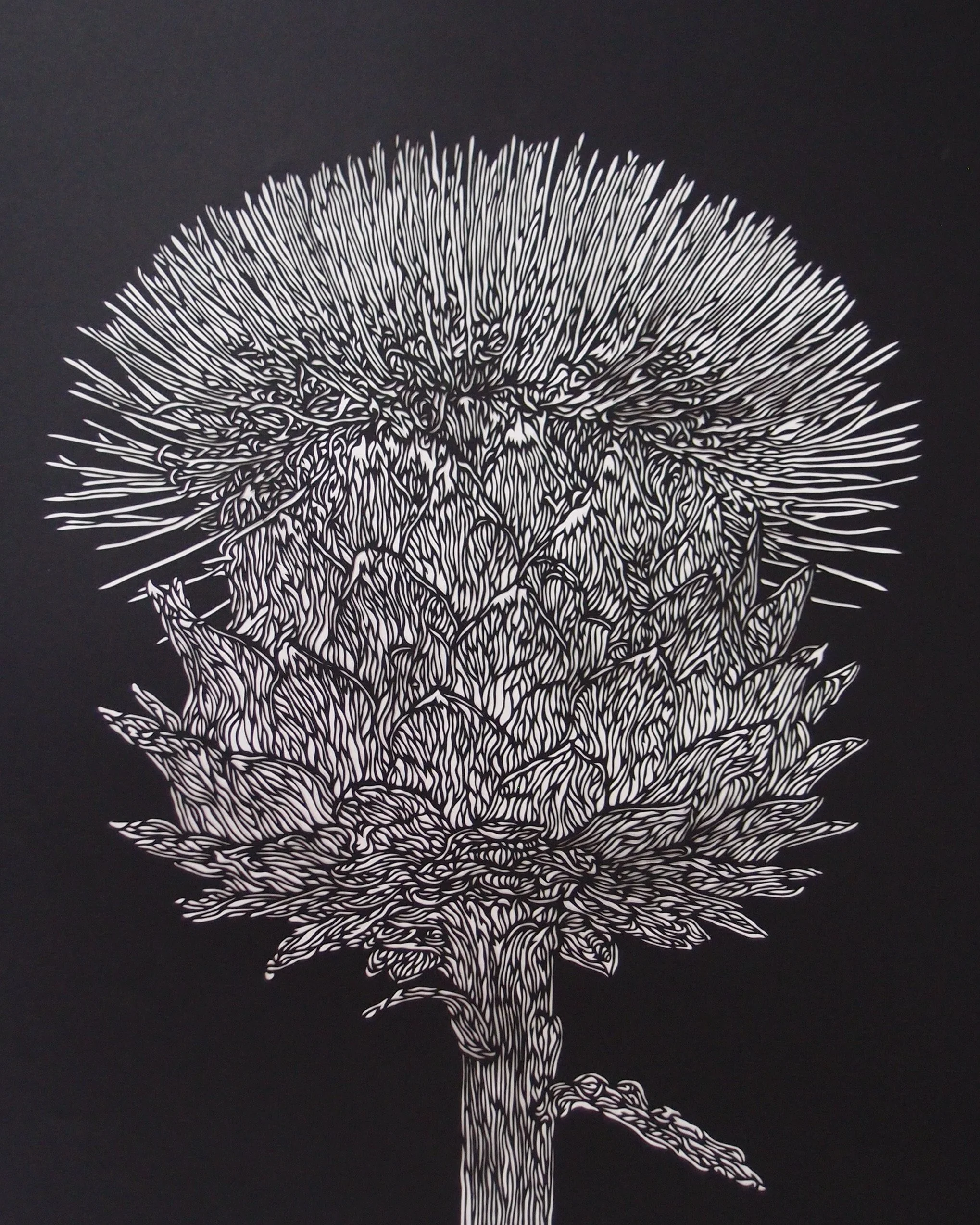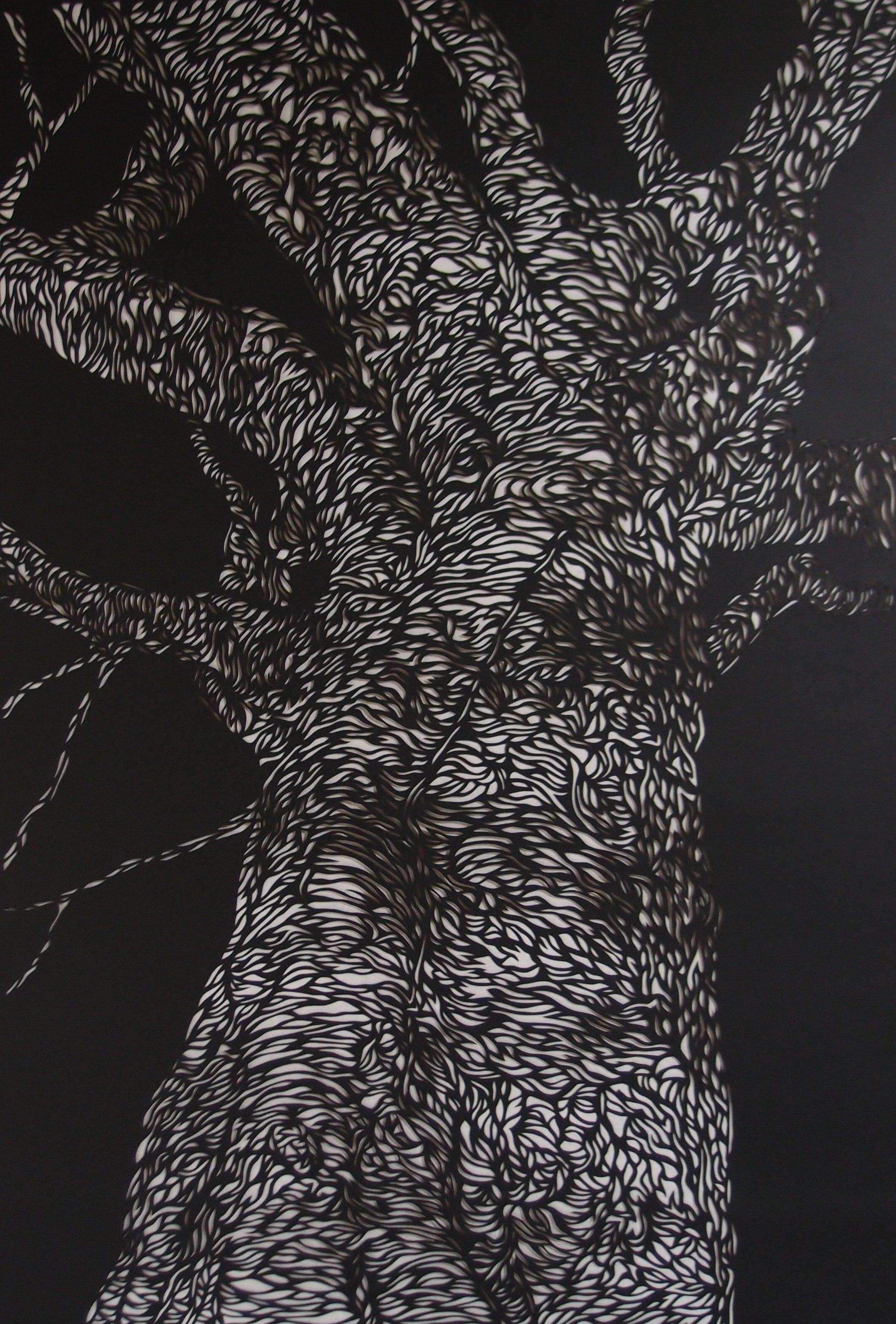Interview with KIYORA
KIYORA is a Paper-cutting artist.
Born in Japan, where she graduated in Architecture.
This influenced the structure of her compositions, proportions and line.
Kiyora’s detailed works aim to depict the changing pockets of energy that make up our universe.
Through bold monochromatic contradictions, the compositions express light and dark, movement and stillness-using paper as a plane or representation and an outlet for creative expression, a source of energy in its own right, Kiyora is based in Japan.
Her artworks have been exhibited in Tokyo, NY and London.
How do you go about beginning a new piece? Do you have an idea already in mind, or do you start working with materials or sketches to find the departure point?
My inspiration is often images inside my mind. They contain some elements that convey energy to me and some that have beauty in their rhythm. I transform this energy and rhythm into sketches. I create image sketches with movement, and at the point of the best balance of yin-yang it becomes still and I make a draft. I then transform the draft sketch into paper-cutting.
When do you think your most prolific time of day or week is?
The time I can concentrate and sketch is between night and dawn. But if I have music, then I don’t need a particular time to keep focus. I like UK rock music. When I cut paper, in particular, I have to have music on. A lot of people say that the process of paper-cutting is nerve-wracking, but for me, it is an enjoyable time when I can relax and keep working.
What is a barrier you as an artist overcame? Is there anything that enabled you to develop your work as an artist in your life?
In terms of creation, I don’t have any doubts or difficulties. While I sometimes do receive negative comments on my work, my artistic core does not change, and I do not intend to change it. I have been fortunate to have many opportunities to show my work outside of my country, and it has been a great experience for me to receive thoughts and opinions from different countries and regions. I can communicate visually with my work, transcending language and national borders, which simulates me and allows me to feel the diversity of creators and audiences. To feel this “Power of Creativity” is a joy in my life.
Did you have an idea of what you wanted to create right from the beginning?
I have a few images in mind, and I create multiple sketches in parallel. When I progress to the point that I feel as if one image comes to life, that becomes my work.
What is the meaning or creative inspiration for your work? We’re curious what the narrative or story is to what you are producing?
The inspirations for my creation are energy, rhythm, and spatial development. Allegorically speaking, it could be described as a ‘beautiful darkness.’ Not a black and dirty darkness or bright beauty without a shadow: I seek the yin-yang balance of the place where I find this ‘beautiful darkness’ in my creation.
Besides your artworks, are there any other things in life that your voice as an artist may consider vital or valuable? What makes you joyful and creative, in other words?
My esthetic is formed in literature. I am strongly influenced by the esthetics of writing by authors like Dazai Osamu and Mishima Yukio, who I have been into since my teenage years and the magical realism of Gabriel García Márquez. I have many harsh memories of childhood, and the world of books was an important place for my soul. In the literature, I was passionate about I found ‘beautiful darkness,’ and feeling its beauty was salvation for my life. Even in simple dark stories, the writing can sublime it into ‘beauty,’ and that artistic talent fascinated me. I am not a very good writer, so I aim to visualize that ‘beautiful darkness’ in my art.
Are there any exhibitions or places where people can see these beautiful creations in person soon? Anything on the horizon?
The schedule is still up in the air. Check out the information on my Social media.
Website: http://kiyora888.mods.jp














